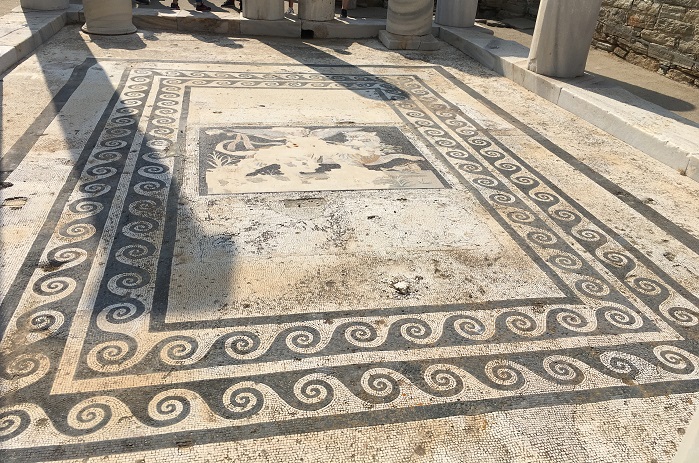
Dionysos, god of wine, fruitfulness, and ecstatic revelry, was honored alongside Apollo on Delos and nearby Mykonos. Join Thor and me as we visit his sanctuary.
NOTE: Since our recent trip to Greece to research more settings for my novel-in-progress, THE ARIADNE DISCONNECT, Thor and I knew we had to return to this magical region. My first entry in this new blog series posted here on Saturday, 10/20/2018. It gives an overview of our rambles from Athens to seven islands in the Dodecanese and Cyclades groups, ending our ferry-hopping pilgrimage on the anciently sacred island of Delos.
As I discussed in my 2017 blog posts about our visit to sacred Delphi on mainland Greece, where Apollo ruled during the summer and Dionysos during the winter, the two gods could be said to represent opposing aspects of the human psyche. Apollo, as the somewhat aloof god of reason, music, and prophecy, also somewhat surprisingly was the god of pestilence that could strike crowded cities if they didn’t follow proper hygiene. Dionysos, a relative newcomer among the Olympian deities, offered a more personal and emotional attachment to his human followers, as they could partake of his gift of grapes/wine and allow expression of the mysterious, irrational, and sensual aspects of their psyches. Here on Delos, “officially” Apollo’s island, evidence shows that Dionysos was very popular, as was Apollo’s virgin huntress sister Artemis. Today we’ll take a walk through the Sanctuary of Dionysos and glimpse some of his images in the Delos museum.
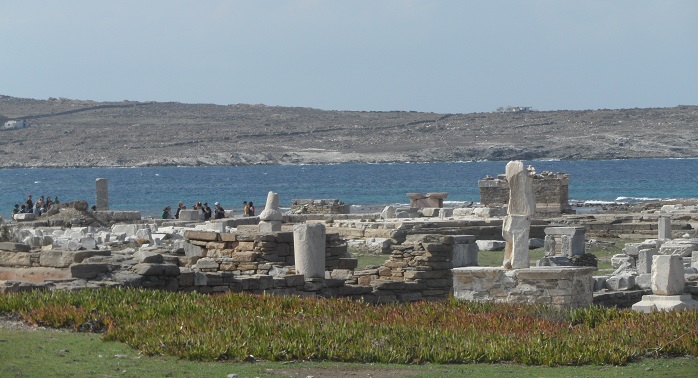
There isn’t much left of the structures of the sanctuary, mostly bases of halls and temple, and some beautiful carved marble pieces.
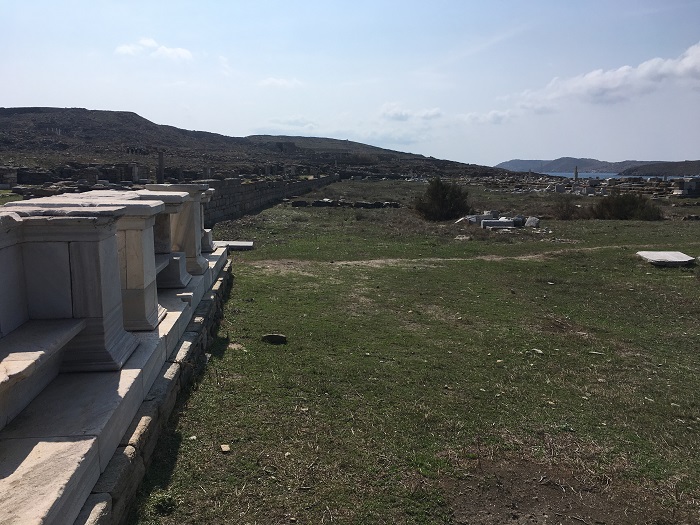
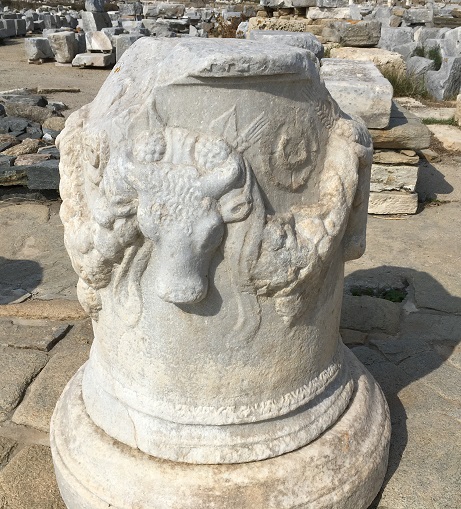
The Greeks were fond of phallic images representing fertility as well as sensuality, and there were two of these columns honoring Dionysos. Later invaders damaged the columns, perhaps finding them offensive. Thor enjoyed the mystery of the phallic-headed chicken on the side of this one:
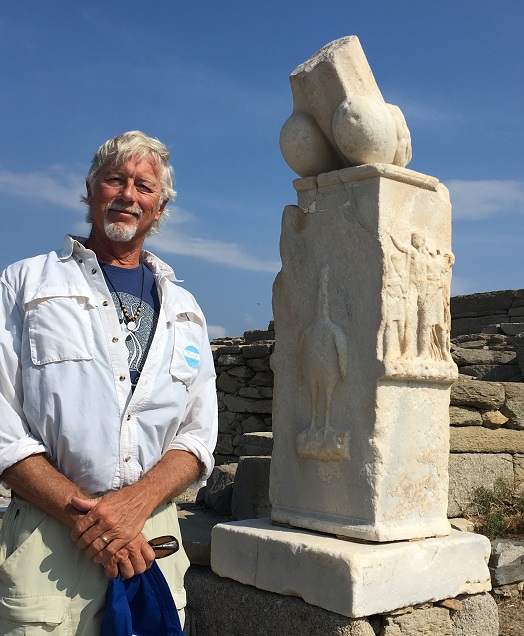
The figures on the right-hand side depict a scene from a Dionysiac circle ceremony.
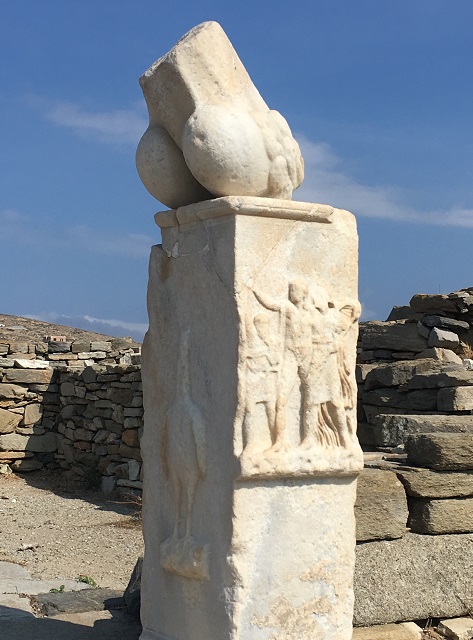
A partial statue of Dionysos remains, with unusually military-looking attire.
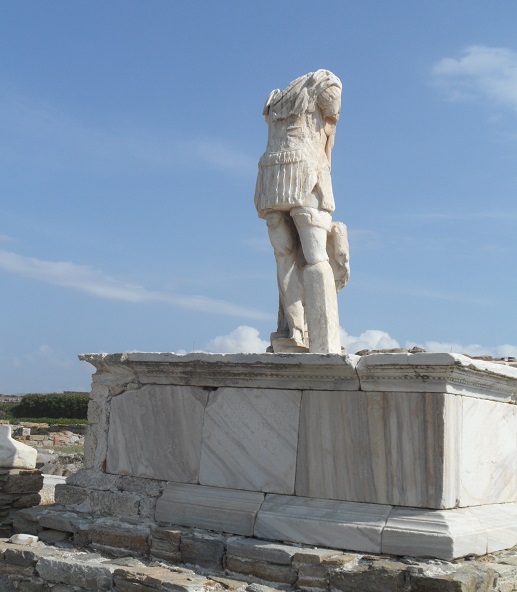
Inside the Delos museum lounges this partial statue from around 200 B.C. of Dionysos in a more relaxed mood, maybe after partaking of his own wine. I’d guess this was a Roman carving, since by that time they were present on the island, and the naturalistic style would reflect their influence. The cult of Dionysos was big with the Romans.
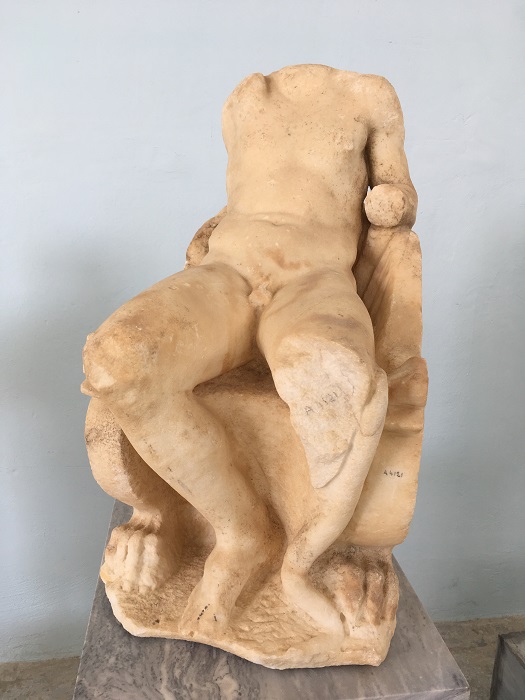
I’m enjoying the history and mythology of Dionysos ever more as I work on THE ARIADNE DISCONNECT. (According to myth, the god married the original Minoan Ariadne after she was abandoned by fickle Theseus, whom she had rescued from the labyrinth.) One of my characters has unexpectedly begun to manifest a spiritual connection to the god’s powers. Hang on — it could be a wild ride!
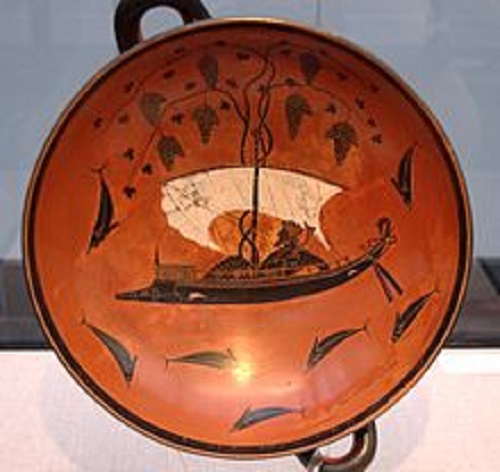
But back to Delos: Earlier, we visited the Theater Quarter, where the actors lived who brought to life the tragedies and comedies of the times. Since Dionysos was the patron god of theater, many of the open-air venues were dedicated to him.

These two statues of actors portraying bawdy “Paposilenoi” or Silenus figures, drinking and partying companions of Dionysos, were originally located on either side of the god’s statue in the sanctuary. Now they reside in the museum near the “relaxed” Dionysos statue.
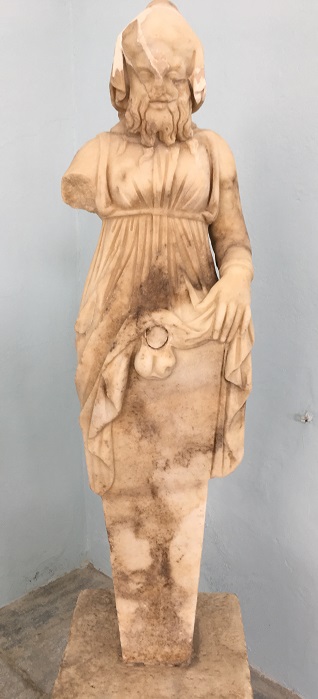
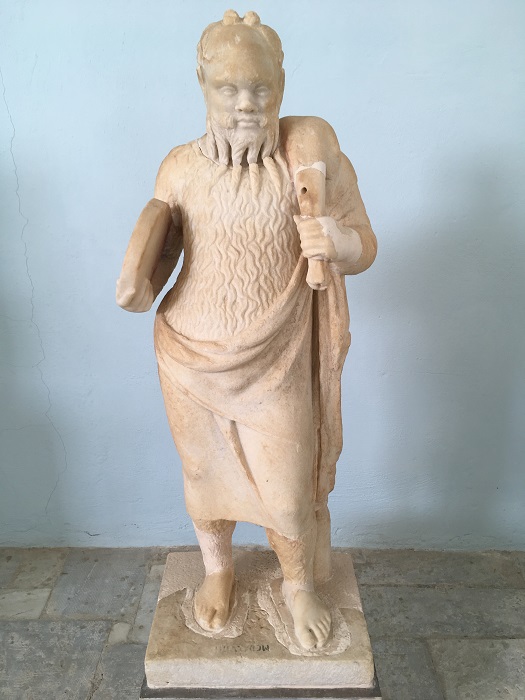
In that vein, some of the erotic/phallic art and utensils in the museum:
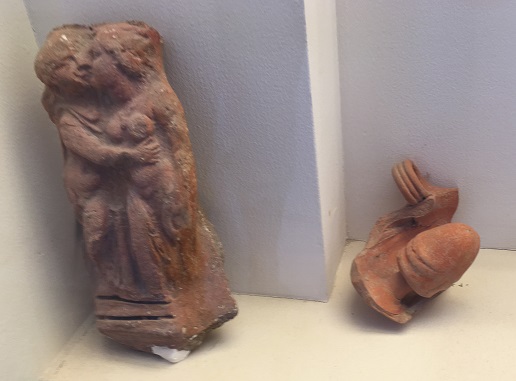
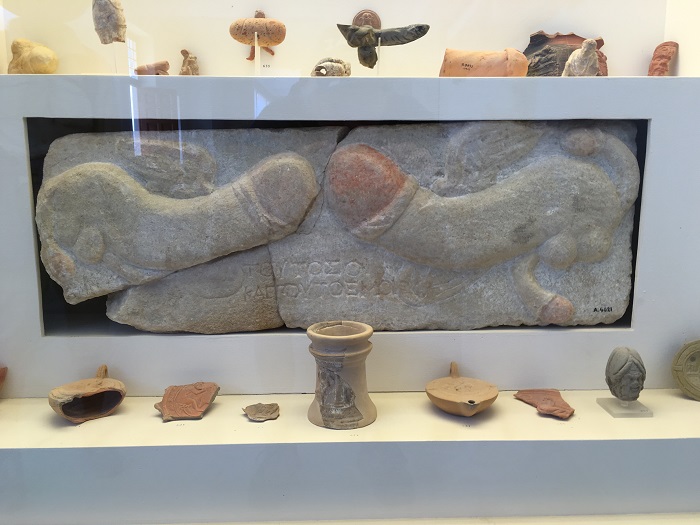
And another glimpse of the original mosaic from a wealthy home in the theater district, Dionysos in his winged manifestation, riding a tiger. The amazingly detailed mosaic is composed of thousands of tiny “tesserae” of glass paste and semi-precious stones.
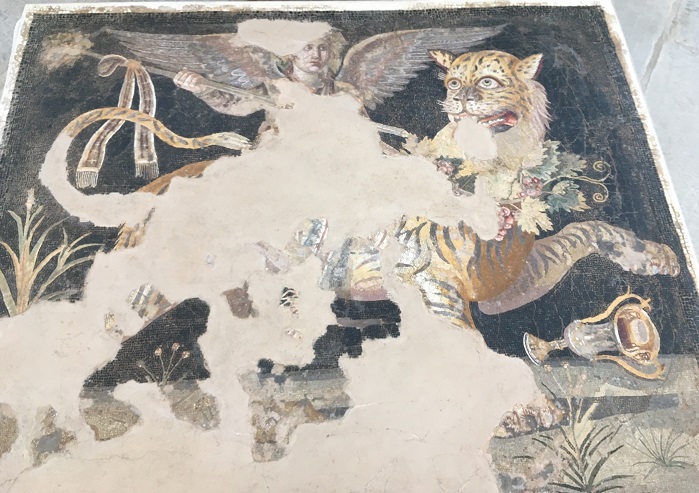
Next week: Climb with us to the island’s peak, past the temple of Isis.
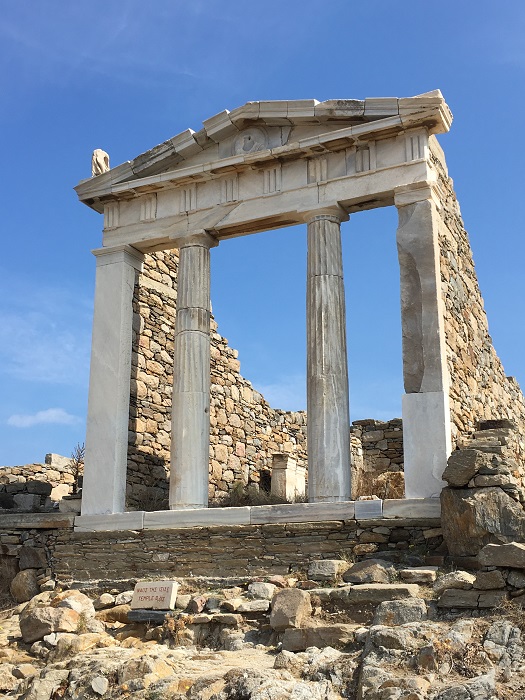
*****
You will find The Rambling Writer’s blog posts here every Saturday. Sara’s latest novel from Book View Cafe is available in print and ebook: The Ariadne Connection. It’s a near-future thriller set in the Greek islands. “Technology triggers a deadly new plague. Can a healer find the cure?” The novel has received the Chanticleer Global Thriller Grand Prize and the Cygnus Award for Speculative Fiction. Sara has recently returned from another research trip in Greece and is back at work on the sequel, The Ariadne Disconnect. Sign up for her quarterly email newsletter at www.sarastamey.com

1 thought on “The Rambling Writer Explores More Greek Islands, Part 38: Dionysos on Delos”